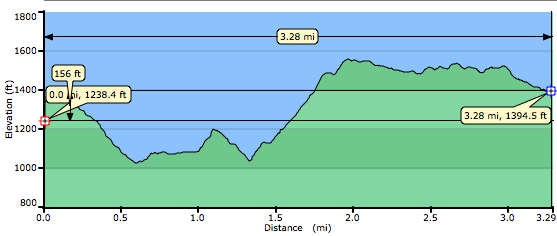Perfect for the last day of the year – Dill Pixels’ Flickr collection of “The End” screens from famous movies:
Quick recap of 2008 for the Hacker/Kubes family:
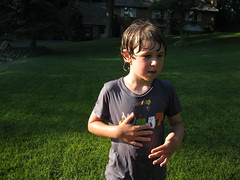 Miles started 1st grade and is barreling full-steam ahead into an amazing childhood. Watching a child go from knowing his letters to being able to read full-on books aloud is a delightful experience. His ideas are still mind-bending, his physicality still awesome. He doesn’t just ride a two-wheeler — he rides it long distance (he and Amy surprised me on bikes at work one day – a five mile trip each direction). Two days after getting a pogo stick for Christmas, Miles logged a record-breaking 23 hops (love that recovery at the very end of the clip). He’s sweet and thoughtful and loving and every minute with him is a joy.
Miles started 1st grade and is barreling full-steam ahead into an amazing childhood. Watching a child go from knowing his letters to being able to read full-on books aloud is a delightful experience. His ideas are still mind-bending, his physicality still awesome. He doesn’t just ride a two-wheeler — he rides it long distance (he and Amy surprised me on bikes at work one day – a five mile trip each direction). Two days after getting a pogo stick for Christmas, Miles logged a record-breaking 23 hops (love that recovery at the very end of the clip). He’s sweet and thoughtful and loving and every minute with him is a joy.
In sadder news, Plato – our family cat of 17 years – finally reached the end of his comfortable life. We had him put down late summer after he could no longer move comfortably or hold his bladder. Plato’s been a staple of my life with Amy since I’ve known her, long before we were married. And he was the cat Miles was born with – his first relationship with an animal. Losing him was tough.
On the work front, I’ve transitioned from webmaster for the UC Berkeley Graduate School of Journalism to webmaster for the Knight Digital Media Center, while staying in the same chair (and realized I’d been sitting in the exact same chair for seven years running). Taking that job meant spending a few months learning Python and Django. A long ramp-up, but absolutely loving Django now, and using it for more and more side projects as well. Birdhouse Hosting also started offering Django this year.
With the Knight Center, I’ve been involved with a mission to help newsrooms across the country figure out how to address the challenges of crumbling revenues and massive layoffs, as the distributed web continues to threaten the traditional/localized newspaper. News organizations are going through massive mental shifts, becoming increasingly technology focused. The center runs week-long workshops for visiting journalists, who come to have their heads crammed with ideas for ways to create innovative and compelling content online. Year after year, my association with the J-School proves challenging and rewarding, and never sits still for long. I feel extremely lucky to have job security as this ugly recession settles in.
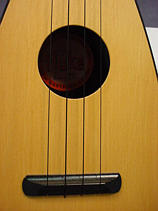 Other misc: I’ve been writing occasional music-related pieces for Stuck Between Stations, which I run with a few friends. When time allows or the weather/mood command it, I’ve been strumming away on the ukulele. And, perhaps a bit sadly, Twitter all but killed my urge to blog. I feel bittersweet about that – on one hand, Twitter is a much more fluid experience than blogging, and can be done in the margins of life without requiring big chunks of time. On the other hand, I do miss the more in-depth expressive capacity of the real thing. But writing regularly is important; I promise not to let the blog die, no matter how much more convenient Twitter may be.
Other misc: I’ve been writing occasional music-related pieces for Stuck Between Stations, which I run with a few friends. When time allows or the weather/mood command it, I’ve been strumming away on the ukulele. And, perhaps a bit sadly, Twitter all but killed my urge to blog. I feel bittersweet about that – on one hand, Twitter is a much more fluid experience than blogging, and can be done in the margins of life without requiring big chunks of time. On the other hand, I do miss the more in-depth expressive capacity of the real thing. But writing regularly is important; I promise not to let the blog die, no matter how much more convenient Twitter may be.
Amy too has a new job. After a year of being a regular parent participator at Miles’ school, Amy applied for – and got – the job of 2nd/3rd grade classroom assistant. And just a few weeks into that gig, she was asked to be the official math teacher for the 3rd grade class. On Fridays she teaches visual arts to the combined class. She’s jumped in with both feet and is loving being with the kids. I built a brand-new web site for Miles’ school this year.
Also in 2008, I made several trips to Morro Bay to help my mother move out of my boyhood home and into a new life with my father in the mountains. The change was a long time coming, went smoothly, and had a happy ending, though it was tough to say goodbye to my childhood home. But the change is all for the better, and has brought new unity to our family.
Looking back, 2008 has been a year of small revolutions and grand plans, satisfaction and warmth. Life is good. Love and best wishes to all Birdhouse readers, and to my extended families on both sides.

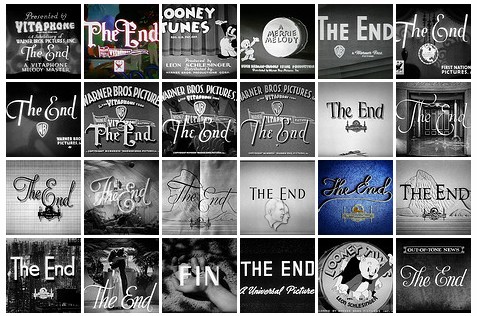
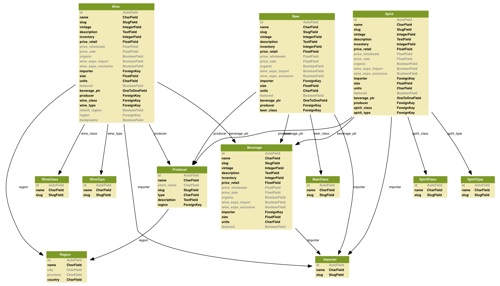
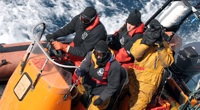 It’s been a long time since I’ve been as inspired by a TV show as I am by Animal Planet’s
It’s been a long time since I’ve been as inspired by a TV show as I am by Animal Planet’s 
